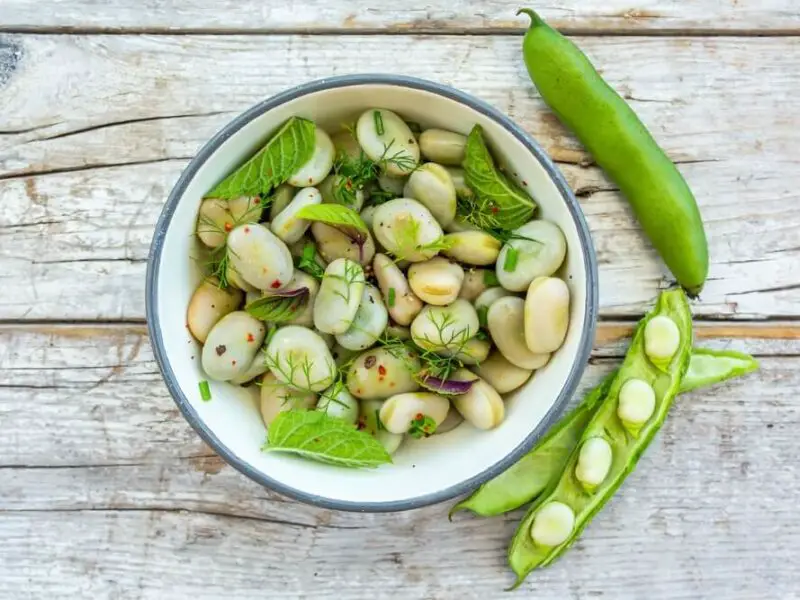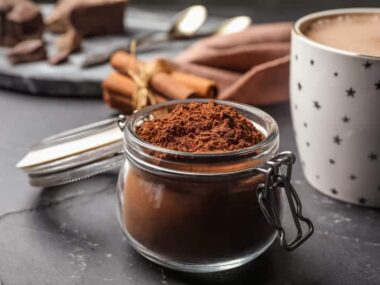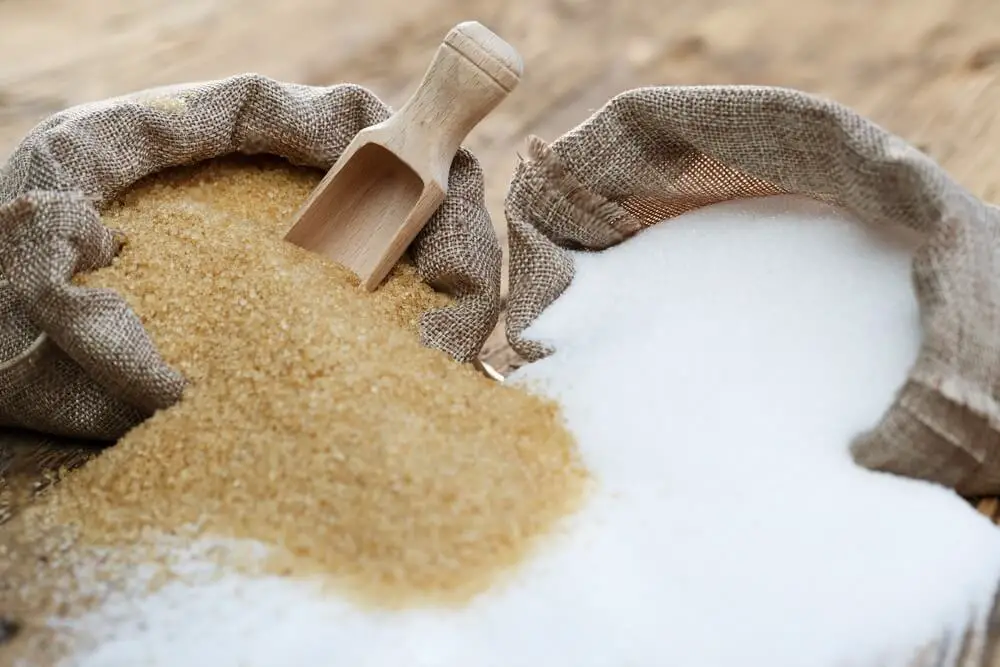Hey food lovers, ever find yourself craving those creamy fava beans but they’re nowhere to be found? Yeah, I feel your pain. As much as I love those mood-boosting legumes, they’re not always the easiest ingredient to track down.
Luckily, after lots of experimenting in the kitchen, I’ve uncovered some awesome alternatives to scratching that fava bean itch. Whether you need a substitution for a specific recipe or just want to mix things up, these options will leave you feeling satisfied without compromising on flavor.
From tasty beans and crunchy veggies to versatile grains, there are plenty of tasty substitutes to play with. But how do you know which ones will give you a similar experience? In this article, I’m spilling all the details on the best fava bean subs and how to use them.
By the time you’re done reading, you’ll be fully stocked with ideas to keep those favorite dishes exciting, even without the star ingredient. So grab a snack and get comfortable—we’re about to dive into your new go-to substitutes for light, creamy favas. Your taste buds will thank you later!
The Best Substitutes for Fava Beans
1. lime bean
If you’re looking for a bean-to-bean swap, lima beans are your best bet. With their starchy, creamy texture and subtly sweet flavor, they come incredibly close to mimicking favas.
I always keep a big bag of limas in my pantry just for occasions when I need a fava bean fix. They work great straight-up in place of shelled favas in any recipe. Just use a cup of limas for each cup of favas called for.
Some of my favorite uses? Throw them into soups like my vegan “chicken” noodles for an extra hit of protein. Or mash them up into a dip with garlic and herbs—so creamy and satisfying! I also love roasting them with olive oil, salt, and pepper for a quick veggie side.
The main perk of limas is their year-round availability. While fava season is short, limas can be found canned, dried, or frozen at any time. They’re also usually cheaper than favas, making them a more affordable long-term sub.
So next time your recipe needs beans, limas are your new best friend. Just remember: one cup of limas for every cup of favas. Give them a try, and I promise you won’t miss the favas one bit!
2. Edamame
For those times when you need a quick fava replacement, look no further than frozen edamame. These immature soybeans cook up in no time with zero prep—just throw them in boiling water for 5 minutes and you’re good to go!
With their plump, bright green pods hiding sweet beans inside, edamame has a remarkably similar taste and texture to freshly shelled favas. I like to leave them whole in the pods for snacking or sprinkle them over salads for an extra hit of protein.
Nutritionally, edamame packs even more protein per cup than favas. They’re also loaded with fiber, iron, calcium, and antioxidants. Basically, these green gems are one of the healthiest legume options out there.
Being readily available year-round in the freezer section is a major perk too. Just grab a bag for your next grocery trip, and you’ll always have a simple fava sub on hand. Whether you’re short on time or just craving that fresh-from-the-pod experience, edamame is a perfect stand-in.
So next time your meal calls for favas, opt for frozen edamame instead. Five minutes is all it takes to transform them into a delicious, nutritious swap for your favorite springtime bean. Easy peasy!
3. Cannellini beans
When you need a fava substitute that works for any recipe, cannellini beans are your new best friend. These creamy white beans have a texture reminiscent of favas and blend seamlessly into a wide variety of dishes.
As an everyday pantry staple in Italian kitchens, cannellinis are no stranger to soups, stews, pastas, and more. They take on flavors beautifully without overpowering other ingredients. I find a cup of cannellinis swaps in perfectly when a cup of favas is called for.
Some favorite uses? I mash them into a luxurious puree topped with olive oil and shallots. So satisfying on bruschetta! They also make a stellar vegan “tuna” salad mixed with mayo, celery, and onion.
Cannellinis are also super healthy, loaded with fiber, plant-based protein, and minerals. Unlike some substitutes, they provide complete protein when paired with grains.
Best of all, cannellinis are affordable and available year-round at any supermarket. So for an easy stand-in that works for all recipes, these versatile beans have you covered whenever favas are wanted but not to be found. Give them a whirl—you may have a new staple on your hands!
4. Sugar Snap Peas
For those weeks when all you crave are fresh favas straight off the vine, sugar snap peas make the perfect stand-in. With their crunchy texture and natural sweetness, they transport your tastebuds straight to springtime.
Snapping open those iconic pods filled with juicy peas is so satisfying, just like cracking into fava pods. A cup of sugar snaps is the ideal substitute for raw or lightly cooked favas in salads, pastas, and stir-fries.
Best of all, snaps require zero prep work—just pop the whole pod in your mouth! Compared to the labor-intensive shelling and peeling of fresh favas, these peas are an absolute breeze.
Nutritionally, sugar snaps pack a punch of fiber, vitamins A, C, and K, along with copper and manganese. They also satisfy your veggie quota without weighing you down like other substitutes might.
Easily found year-round, these perky peas make the perfect substitute when you’re craving spring but it’s still the middle of winter. Add a cup of sugar snaps to any dish for a crispy, sweet kick that’ll have you feeling sunny no matter the season.
5. Snow peas
For those times you want a fresh green bean substitute with a similar texture but not as strong of a flavor as sugar snaps, snow peas are your new best friend. With their delicate crunch and subtle sweetness, they mimic fava beans perfectly.
I find a cup of snow peas swaps in easily for raw or lightly cooked favas in any recipe. Their neutral taste allows the other flavors to shine through without competing. Slice them into stir-fries, toss them into salads, or add a handful as a snack.
Not only are snow peas a versatile substitute, they’re also super easy to prep. Unlike fiddly favas, there’s no shelling or peeling required. Just give them a quick rinse, and they’re ready to enjoy!
Nutritionally, snow peas pack the same fiber, vitamins A and C, and skin-boosting copper. They also satisfy your veggie fix at under 20 calories per cup.
6. Green Peas
When you’re just looking for a basic bean-for-bean substitution, you can’t go wrong with good ol’ green peas. With their subtle sweetness and bursts of color, they come surprisingly close to mimicking the taste of favas.
In recipes, I find green peas hold their own cup for cup in place of fresh or cooked favas. Throw them into salads, puree them into dips, or stir fry them alongside veggies—peas are endlessly versatile.
Even better, they require zero prep work before cooking. No de-shelling or peeling is needed! Just give them a quick rinse and boil or sauté for an instant veggie swap. So simple, but so satisfying.
Nutritionally, peas pack protein, fiber, vitamins C and K, and bone-healthy manganese. They also boast antioxidants to support immunity. All this, and they’re budget-friendly too.
Without question, green peas are one of the most accessible year-round substitutes. The next time your recipe calls for beans, reach for these reliable staples instead. Their subtle taste is sure to become a new household favorite!
7. Black beans
For those nights you’re craving something rich and satisfying, black beans make an excellent stand-in for hearty favas. With their dense, almost meaty texture, one cup of black beans can easily replace a cup of favas in soups, stews, and more.
As an incredibly versatile legume, black beans take on flavors beautifully while adding layers of texture. I love mashing them into dips, mixing them into grain bowls, or letting them simmer in chili. No matter how you use them, they’re packed with umami.
Nutritionally, black beans are a powerhouse. Just one cup provides over 15 grams of plant-based protein, tons of fiber, and minerals like iron, magnesium, and potassium. They also contain antioxidants for protection against disease.
Available dried or canned anytime of the year, black beans are absurdly budget-friendly too. A bag goes a long way toward filling recipes.
8. Black-Eyed Peas
For recipes where you want a subtler bean flavor, black-eyed peas are the perfect nod to Southern comfort food. With their creaminess and slight nutty taste, one cup easily replaces a cup of favas in soups, stews, or sides.
With black-eyed peas, the options are endless. I love throwing them into Collard Greens or Hoppin’ John for that classic pea and rice flavor. They also add texture and protein to salads or chili.
One secret I learned: gently fry them in a skillet with onions and seasoning for an instant flavor boost! So satisfying as a warm side.
Nutritionally, black-eyed peas are loaded with fiber, folate, manganese, and magnesium. Just one cup provides over 7 grams of plant-based protein too. Talk about an easy way to increase veggie intake!
9. Chickpeas
When you need a hearty bean sub with protein for days, chickpeas are your new best friend. With their creamy yet substantial texture, one and a half cups of chickpeas can stand in for a cup of favas in recipes.
Chickpeas take on flavors beautifully while adding heft and protein. Roast them with olive oil and herbs for an instant snack. Or blend into hummus as a dip or spread—the options are endless.
Nutritionally, one cup packs over 14 grams of plant-based protein to fuel your day, plus tons of fiber, manganese, phosphorus, and folate. No other bean compares when it comes to protein density!
Buy canned chickpeas at any time for convenience or dry them to cook fresh. Either way, they’re budget-friendly and last for ages in the pantry too.
10. Baked Tofu
For a meatless Monday or when you want a non-bean sub, baked tofu takes on the flavor of any dish. Diced or crumbled, it adds a heartiness that closely resembles cooked favas.
Start with a block of extra-firm tofu and cube or crumble it. Toss with soy sauce, garlic, and oregano, then bake until crispy. Use in salads and pasta dishes—anywhere you’d use favas.
Nutritionally, tofu is packed with complete vegan protein (10g per half cup!) plus calcium, iron, and selenium. It has a neutral taste and takes on surrounding seasonings beautifully.
Tofu is very affordable, widely available, and keeps for ages in water in the fridge. Plus, it’s a cinch to prep—just press, cube, and season. The ultimate easy protein source!
For a satisfying, protein-dense alternative to beans, reach for baked tofu. Its meat-like texture is sure to win over even hardcore non-vegans looking for a fava sub. Bonus: it’s dairy-, grain-, and gluten-free too!
11. Red kidney beans
When you want a bean substitute with a big, bold flavor, red kidney beans are your new best choice. With their dense texture and deep reddish-purple hue, one and a half cups of kidney beans replace a cup of favas perfectly.
Kidney beans pair beautifully with robust flavors like chili, stew, curry, and barbecue. I love how their slightly earthy taste melds with spices and seasonings. No bland legumes here—kidney beans pack a serious umami punch!
Nutritionally, a cup contains over 11 grams of plant-based protein and tons of fiber, manganese, and iron. You truly can’t beat their nutritional density.
Find canned kidney beans at any time or dry them to cook fresh. Either way, their rich taste is sure to linger on your taste buds long after.
FAQs
Why are fresh fava beans difficult to use?
Fresh fava beans require a lot of labor to prepare—both removing them from their pods and then peeling off the tough outer skin of each bean. This can make them undesirable for weeknight cooking. Frozen or canned options don’t have the same fresh flavor either. The substitutes in this guide avoid the work of processing fresh favas.
When is the best time to find fresh fava beans?
Fresh fava beans have a short season in the late spring and early summer months. Their peak season varies depending on your region, but generally runs from May through June in most areas. Finding fresh favas outside of this time frame can be challenging, which is why the substitutes provide alternatives year-round.
Can any of these substitutes be used fresh, like fava beans?
A few options, like sugar snap peas, snow peas, and green peas, can be used raw or lightly cooked, like fresh fava beans, in salads or light dishes. Most other substitutes, like canned beans, are best used in cooked applications like soups, stews, and sides due to their processing.
Do the bean substitutes provide similar nutrition to fava beans?
While the flavors may be similar, the nutritional profiles can vary. In general, bean substitutes provide protein, fiber, vitamins, and minerals, but fava beans have a unique nutrient composition. Peas and beans offer complete plant-based proteins when combined with grains. Edamame is one of the closest nutritional matches to fava beans.
Can these substitutes be interchangeable in recipes?
Yes, in most cases, the substitutes can be directly swapped into recipes, cup for cup, where fava beans are called for. However, textures may differ, so adjustments in cooking time or amounts used may be needed. It’s best to review a recipe and pick a substitute with a similar intended texture or use.
Do the substitutes work for both fresh and dried fava beans?
Yes, most of the substitutes can be used to replace either fresh or dried fava beans in recipes. Beans and legumes that are available dried, like chickpeas, black beans, etc., provide flexibility to use them dried or canned. Pea substitutes work best when replacing fresh fava beans.
Can these substitutes be used for fava bean dishes from other cuisines?
Yes, the substitutes can be used in fava bean dishes and recipes from cuisines all over the world. For example, chickpeas could replace fava beans in Egyptian ful medames or Middle Eastern dishes. Black-eyed peas would work in southern-style fava bean recipes. Experimenting with different cultural preparations is encouraged.
Are any of the substitutes allergen-free?
Some options, like baked tofu, are free from the top 8 allergens, like dairy, eggs, gluten, and soy. Black beans and peas are generally well tolerated. However, all legumes pose potential allergy risks for certain individuals, so check ingredients to avoid allergens.
Do they work for frozen or canned fava beans too?
While fresh is most authentic, many substitutes can stand in for frozen or canned fava beans in cooked applications too. Canned black beans or chickpeas are easy swaps that maintain the cooking time and texture well in recipes calling for canned favas.
Can these substitutes be found year-round?
Yes, all of the substitutes can be found either fresh, frozen, or canned year-round at most supermarkets and grocery stores, making them practical alternatives when fresh fava beans are out of season. Stocking your pantry ensures you’re never without an option.
Conclusion
I hope this guide has provided you with plenty of tasty and practical substitutes to use in place of fresh fava beans. While nothing truly mimics their unique flavor exactly, these alternatives come very close and offer the benefits of easy preparation and year-round availability.
Experiment with different substitutes in your favorite fava bean recipes to see which ones you like best. And don’t forget to try adapting recipes from various world cuisines by swapping in beans and legumes.
With some creative choices from this list, you’ll never miss a beat when the seasonal fava beans have come and gone. Instead, you can enjoy the convenience of canned, dried, or frozen options that work perfectly in place of fresh.
Most of all, have fun expanding your bean and legume repertoire. I hope these substitutes inspire you to cook more plant-based meals all year. Please reach out if you have any other questions!



